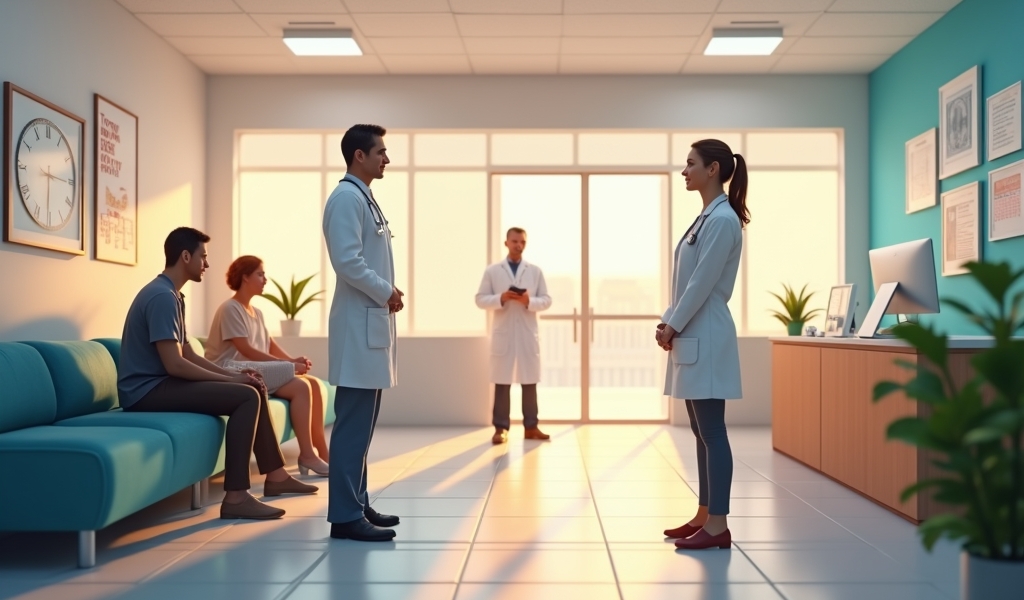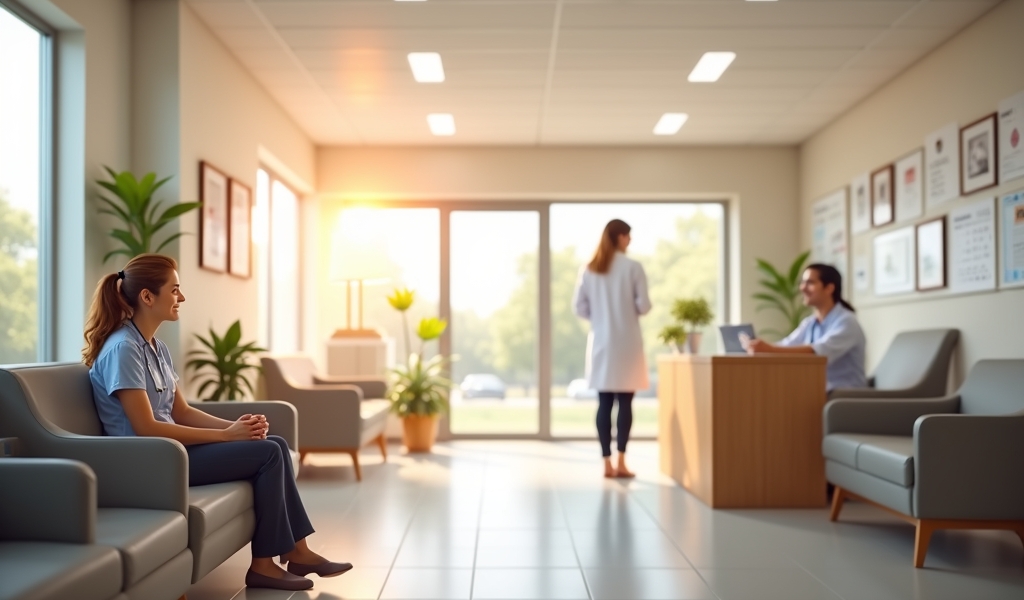Overview
Getting a same-day doctor appointment requires strategic action such as calling offices early morning, utilizing urgent care or telehealth services, using patient portals, and effectively communicating your symptoms’ urgency. These five proven methods can help patients receive prompt medical attention when needed, preventing health conditions from worsening and reducing the anxiety of navigating healthcare systems during illness.
Table of Contents
- 1. Leverage Early Morning Call Times
- 2. Utilize Urgent Care and Walk-in Clinics
- 3. Take Advantage of Telehealth Services
- 4. Use Patient Portals and Medical Apps
- 5. Be Strategic with Your Request
- Conclusion
- Frequently Asked Questions
In today’s fast-paced world, illness rarely arrives with advance notice. When you wake up with a high fever, develop a sudden rash, or experience persistent symptoms that worry you, waiting days or weeks for a doctor’s appointment isn’t just inconvenient—it can be anxiety-inducing and potentially risky for your health.
Getting a same day doctor appointment has become increasingly challenging as healthcare systems face staffing shortages and growing patient demands. Yet immediate care is sometimes necessary, not just for peace of mind, but to prevent conditions from worsening or to begin treatment promptly.
The stress of feeling unwell while simultaneously navigating the healthcare system can make symptoms feel even worse. Fortunately, there are effective strategies to increase your chances of seeing a doctor today. Let’s explore five proven methods to secure that same-day appointment when you need it most.
1. Leverage Early Morning Call Times
The early bird often catches the medical appointment. Most doctor’s offices set aside a few same-day appointments specifically for urgent needs, and these slots typically fill quickly.
When to call: Call your doctor’s office the moment they open—usually between 8:00 and 8:30 AM. Some practices even begin taking calls 15-30 minutes before their official opening time. Monday mornings tend to be the busiest, so be prepared for longer hold times.
Be prepared: Before calling, have your information ready, including:
- Your name, date of birth, and patient ID number (if you have one)
- Insurance information
- A concise description of your symptoms
- Any relevant recent medical history
- Your schedule flexibility for the day
What to say: Be clear but concise about your symptoms and why you need to be seen today. For example: “I’ve developed a fever of 102 degrees overnight along with severe ear pain that’s preventing me from sleeping. I’m concerned it might be an infection that needs immediate attention.”
Being polite yet direct about the urgency of your situation often helps front desk staff understand the necessity of fitting you in. According to a Health Affairs study, patients who clearly articulate their symptoms have better outcomes in securing urgent appointments.
2. Utilize Urgent Care and Walk-in Clinics
When your primary care physician can’t accommodate you, urgent care centers and walk-in clinics provide excellent alternatives for same-day care.
Primary care vs. urgent care: While your primary doctor knows your medical history best, urgent care centers specialize in treating non-life-threatening conditions that require prompt attention. They typically offer extended hours, including evenings and weekends.

3. Take Advantage of Telehealth Services
The pandemic accelerated the adoption of telehealth, and this convenient option remains an excellent way to get same-day medical attention for many conditions.
Virtual appointment options: Telehealth visits typically involve video consultations through secure platforms. Most major health systems and many independent practices now offer this service, with some able to connect you with a provider within hours or even minutes.
Consider scheduling an online doctor visit for conditions that don’t necessarily require physical examination. These virtual appointments are often available same-day and can save significant time and stress.
Setting up quickly: To prepare for telehealth:
- Check if your insurance covers telehealth services
- Download any required apps in advance
- Test your camera and microphone before the appointment
- Find a quiet, well-lit space for the call
- Have a list of your medications and symptoms ready
Suitable conditions: Telehealth works particularly well for skin conditions, cold and flu symptoms, allergies, pink eye, minor infections, medication consultations, and mental health concerns. A virtual doctor visit can also help determine if your condition requires in-person treatment.
Research from the Centers for Disease Control and Prevention indicates that telehealth utilization increased by over 154% during early pandemic periods, demonstrating its effectiveness and growing acceptance among both patients and providers.
4. Use Patient Portals and Medical Apps
Digital technology has transformed how we access healthcare, with patient portals and specialized apps making it easier than ever to request and secure same-day appointments.
Navigating patient portals: Most healthcare providers now offer online portals where you can:
- Request urgent appointments
- Send direct messages to your healthcare team
- View cancellations and open appointment slots
- Access virtual urgent care services
If you haven’t set up your patient portal account yet, do so before you’re sick. The registration process typically requires verification steps that could delay access when you’re in urgent need.
Appointment-finding apps: Several apps specialize in connecting patients with available same-day appointments, including:
- Zocdoc
- Solv
- Healthgrades
- MyChart (used by many hospital systems)
These platforms allow you to filter by insurance, location, and appointment type to find available slots with participating providers.
Benefits of digital communication: Using these tools often provides faster responses than phone calls, as messages go directly to the appropriate staff member rather than waiting in a phone queue.
For conditions that can be assessed visually, a video doctor visit might be the fastest route to medical attention. Many providers can schedule these within hours of your request.

5. Be Strategic with Your Request
How you communicate your needs can significantly impact your success in securing a same-day appointment.
Communicating symptoms effectively: Be specific about your symptoms and their severity. Instead of saying, “I don’t feel well,” try “I’ve had a painful, productive cough for three days, and today I developed a fever of 101 degrees and chest tightness.”
Emphasizing urgency appropriately: Without exaggerating, clearly communicate why your situation requires prompt attention. Mention if your symptoms are:
- Interfering with daily activities
- Worsening rapidly
- Causing severe pain or distress
- Related to a chronic condition with known complications
Remain flexible: Increase your chances by:
- Being willing to see any available provider, not just your regular doctor
- Accepting appointment times that might be inconvenient
- Being prepared for a shorter-than-usual visit that focuses only on your current concern
- Considering allied health professionals like nurse practitioners who may have more availability
According to the American Medical Association, flexibility in appointment type and provider selection significantly increases the likelihood of same-day care.
Conclusion
When illness strikes suddenly, knowing how to navigate the healthcare system efficiently can mean the difference between suffering through the day or getting the treatment you need. By calling early, considering alternative care settings like urgent care or telehealth, utilizing digital tools, and communicating your needs strategically, you can significantly improve your chances of securing a same day doctor appointment.
While these tactics can help during urgent situations, establishing a relationship with a primary care provider before you need urgent care remains the best long-term health strategy. Regular check-ups not only help prevent emergency situations but also make it easier to get priority appointments when truly needed.
Remember that while waiting for medical attention, staying hydrated, resting, and monitoring your symptoms are essential self-care steps that complement professional medical care.
Your health shouldn’t wait—and with these strategies for obtaining a same day doctor appointment, it doesn’t have to.
Frequently Asked Questions
What medical conditions warrant a same-day doctor appointment?
Medical conditions that typically warrant same-day attention include high fevers (especially in children), severe pain, infections showing signs of spreading, sudden unexplained symptoms, worsening chronic conditions, and injuries that may require stitches or evaluation for fractures. Additionally, severe sore throats with difficulty swallowing, persistent vomiting or diarrhea causing dehydration, and new neurological symptoms should be evaluated promptly.
Can I get a same-day appointment if I’m not an existing patient at a practice?
While it’s more challenging to get same-day appointments as a new patient, it’s not impossible. Some practices reserve slots for new patients with urgent needs. Your best options include urgent care centers, retail clinics, or telehealth services that specialize in on-demand care. When calling, explain that you’re a new patient with an urgent medical concern that requires prompt attention.
How much more should I expect to pay for same-day or urgent care visits?
Costs vary widely depending on your insurance coverage and the type of facility. Generally, urgent care visits cost about 30-50% more than regular primary care appointments but significantly less than emergency room visits. Telehealth same-day appointments often cost about the same as regular office visits or sometimes less. Always verify whether a facility is in-network with your insurance to avoid unexpected charges.
Should I go to the emergency room if I can’t get a same-day appointment?
Emergency rooms should be reserved for true emergencies—situations that could be life-threatening or cause permanent disability if not treated immediately. These include chest pain, severe bleeding, difficulty breathing, signs of stroke, serious burns, or severe trauma. For non-emergency but urgent concerns, urgent care centers or telehealth options are more appropriate and will typically have shorter wait times and lower costs.
How can I best prepare for a rushed same-day appointment?
For a productive same-day appointment, write down your symptoms, when they started, what makes them better or worse, and any medications you’re taking. Prioritize your most urgent concerns, as time will be limited. Bring a list of questions in order of importance. Consider taking photos of visible symptoms (rashes, swelling) ahead of time. If possible, send this information through the patient portal before arrival to maximize your face-to-face time with the provider.

